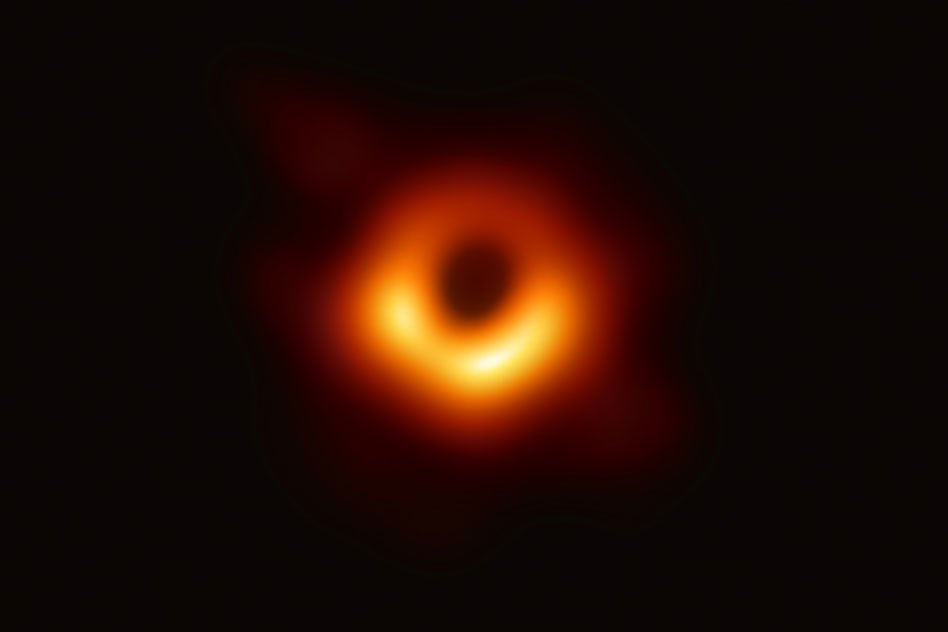First ever real image of a black hole released
- Ken Ecott
- Apr 10, 2019
- 3 min read

A network of eight radio telescopes around the world helped to record the image
Say hello to the black hole deep inside the Messier 87, a galaxy located in the Virgo cluster some 55 million light years away. It may seem underwhelming at first, but it’s one of four images of the supermassive space-time deforming structure — marking the first time such an object has been photographed.
Astronomers have captured the first image of a black hole, heralding a revolution in our understanding of the universe’s most enigmatic objects.
The picture shows a halo of dust and gas, tracing the outline of a colossal black hole, at the heart of the Messier 87 galaxy, 55 million light years from Earth.

The breakthrough image was captured by the Event Horizon Telescope (EHT), a combination of eight radio observatories spread out along four continents, creating what MIT refers to as a “virtual, Earth-sized telescope.” There’s light surrounding the object — a so called “ring of fire.” True to its name, the black hole’s shadow is the dark region in the center. That, mind you, is the spot where gravity’s pull is so strong not even light can escape.
The image shows an intensely bright "ring of fire", as Prof Falcke describes it, surrounding a perfectly circular dark hole. The bright halo is caused by superheated gas falling into the hole. The light is brighter than all the billions of other stars in the galaxy combined - which is why it can be seen at such distance from Earth.
It measures 40 billion km across - three million times the size of the Earth - and has been described by scientists as "a monster".
The black hole is 500 million trillion km away and was photographed by a network of eight telescopes across the world. The light surrounding the object is much brighter than that of surrounding galaxies, allowing it to be captured at such an incredible distance.
The image gives the first direct glimpse of a black hole’s accretion disk, a fuzzy doughnut-shaped ring of gas and dust that steadily “feeds” the monster within.
Details have been published today in Astrophysical Journal Letters.
The blackhole is massive, even by blackhole standards. “It has a mass 6.5 billion times that of the Sun,” Prof Heino Falcke, of Radboud University in the Netherlands told the BBC. “And it is one of the heaviest black holes that we think exists. It is an absolute monster, the heavyweight champion of black holes in the Universe.”
“Black holes are the most mysterious objects in the universe. We have seen what we thought was unseeable. We have taken a picture of a black hole.” said Sheperd Doeleman, Event Horizon Telescope Director and Harvard University

Image credit: University of Arizona
The EHT achieved the necessary firepower by combining data from eight of the world’s leading radio observatories, including the Atacama Large Millimetre Array (Alma) in Chile and the South Pole Telescope, creating an effective telescope the size of the Earth.
A team of 200 scientists pointed the networked telescopes towards M87 and scanned its heart over a period of 10 days.
The information they gathered was too much to be sent across the internet. Instead, the data was stored on hundreds of hard drives which were flown to a central processing centres in Boston, US, and Bonn, Germany, to assemble the information. Prof Doeleman described the achievement as "an extraordinary scientific feat".
Images of the event horizon are particularly important when it comes to testing general relativity, which governs the behaviour of gravity and very large objects. We know that it does not mesh with theories of quantum mechanics, which describes the very small, and the very edge of a supermassive black hole, where gravity is more intense than anywhere else we know of, is the best place to stress test that disconnect.
It is remarkable that the image we observe is so similar to that which we obtain from our theoretical calculations. So far, it looks like Einstein is correct once again.








Comments